Frozen Ground in the Arctic
The arctic tundra contains ground features not found in warmer regions. The arctic is so cold
that the ground beneath the tundra surface remains frozen all year. This permanently frozen
ground is called permafrost. The soil in the permafrost area remains colder than 32
degrees Fahrenheit (0 degrees Celsius).
If the soil never warmed up, there would be no plants growing in the arctic. When the
summer sun warms the tundra surface, however, the top few inches of soil thaw. This melted
part is called the active layer. Plant roots grow within the active layer, and insects
burrow here.
- What date do you think the active layer is melted deepest? You may be surprized...
Unearth the mysteries of the active layer.
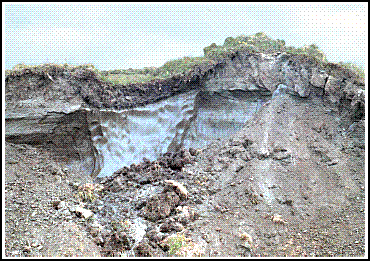 This is a bluff on the coast of the Arctic Ocean.
Waves have eroded the soil, exposing the ground beneath the tundra surface. Frozen soil can
contain ice, like this ice wedge, or it can be dry, like the soil around the ice wedge. This is a bluff on the coast of the Arctic Ocean.
Waves have eroded the soil, exposing the ground beneath the tundra surface. Frozen soil can
contain ice, like this ice wedge, or it can be dry, like the soil around the ice wedge.
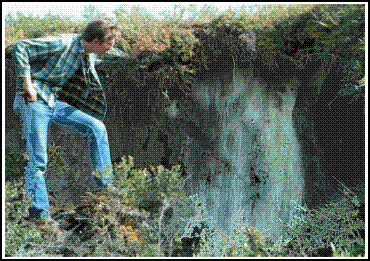 Another ice wedge, this one exposed along a river bank. Another ice wedge, this one exposed along a river bank.
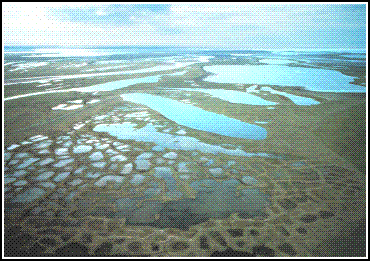 The soil buckles and cracks above the ice wedges, causing these polygons to form (in the lower half of the picture). The soil buckles and cracks above the ice wedges, causing these polygons to form (in the lower half of the picture).
The long, narrow lake in the center of the picture is a thermokarst lake.
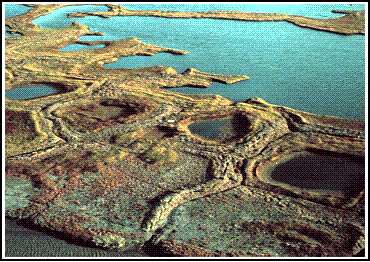 A closer view of some arctic polygons. These are about 70 feet (20 meters) across, although polygons may be as small as 10 feet (about 3 meters)
across. A closer view of some arctic polygons. These are about 70 feet (20 meters) across, although polygons may be as small as 10 feet (about 3 meters)
across.
Ice wedges form a honeycomb of ice walls beneath the soil surface. Look again at the ice
wedge at the beginning of this web page. Notice that on either side of it, other wedges are
partially visible in side view.
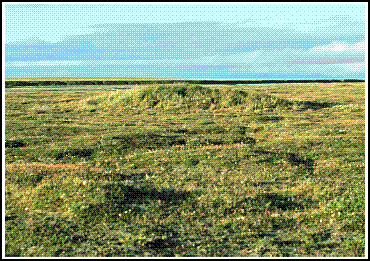 Pingos form when water moves up under the root
mat, and freezes. When water freezes it expands, pushing up the soil. Pingos can be as small as
one foot high (one third of a meter) or over 35 feet high (over 10 meters). This one is about 4
feet high (just over one meter). Pingos form when water moves up under the root
mat, and freezes. When water freezes it expands, pushing up the soil. Pingos can be as small as
one foot high (one third of a meter) or over 35 feet high (over 10 meters). This one is about 4
feet high (just over one meter).
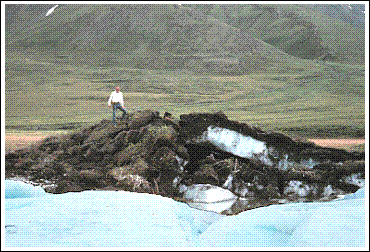 When the soil on a pingo cracks open, and the ice
core is exposed, the pingo begins to melt and break up. This is a frost blister, not a true pingo,
but it shows what the inner ice and overlapping soil would look like in a pingo. When the soil on a pingo cracks open, and the ice
core is exposed, the pingo begins to melt and break up. This is a frost blister, not a true pingo,
but it shows what the inner ice and overlapping soil would look like in a pingo.
September 12, 2008
|